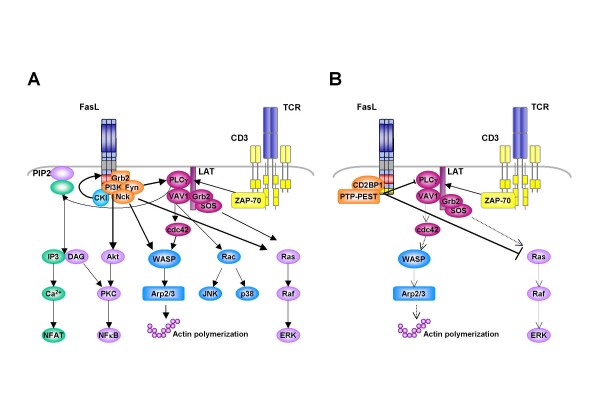Figure 3.
Overview of FasL as a positive (A) or negative (B) costimulatory molecule in T cell activation. Studies with murine CD8+ T cells revealed a strong costimulatory capacity of FasL on signal transduction in TCR-stimulated cells, associated with enhanced MAPK, NFκB and PLCγ activation. In this scenario also the phosphorylation of FasL itself through the CKI as well as the enhanced WASP activation relevant for TCR clustering seems to be important (A). In contrast, FasL has been shown to completely block T cell activation (B). In human CD4+ cells, cell cycle arrest appears to be caused by reduced WASP/Arp2/3-mediated TCR internalisation and inhibition of PLCγ and MAPK activation, possibly initiated through an interaction with the adaptor protein CD2BP1 and the tyrosine phosphatase PTP-PEST. In COS cells, ternary FasL-CD2BP1-PTP-PEST complexes have previously been observed [43].

